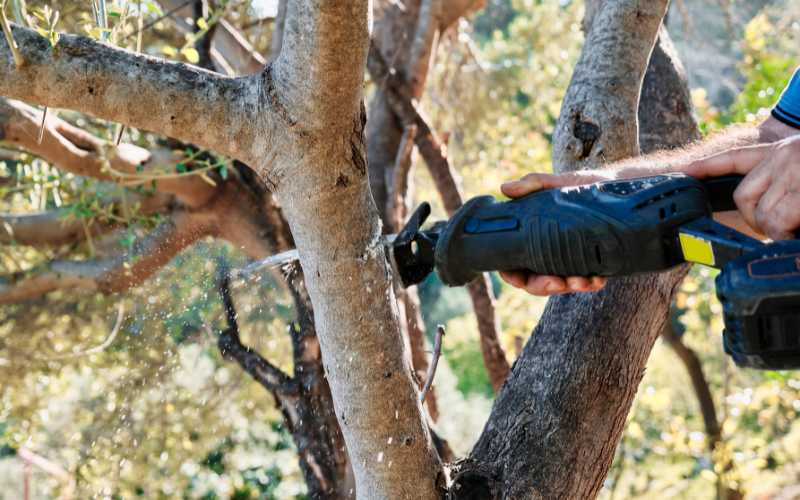There’s a reason why reciprocating saws are used in small demolition and construction projects. That’s because with the right blade installed, it can cut through almost anything, wood, iron, plaster, stone, you name it. Equipped with a reciprocating saw, you’ll cut them all.
That is why it is the perfect tool for home remodelers who work with different kinds of materials.
With a reciprocating saw with you on the jobsite, you’re rest assured that you are not going to have any problem cutting through anything.
With that said, here are 6 reciprocating saw uses you should know about.
Table of Contents
1. All-in-one cutting tool | the Sawz-All
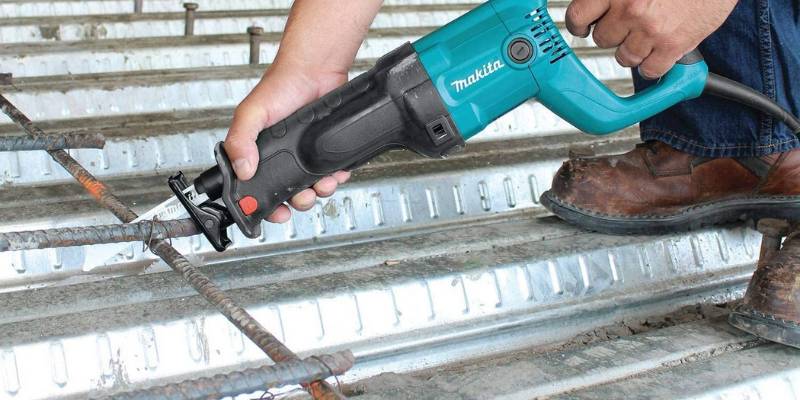
This kind of summarizes all the reasons why you should own a reciprocating saw. It’s an all in one cutting tool.
I believe that’s why Milwaukee called it the Sawzall, because it sawz-all. It saws everything.
Whether you’re working in your yard and you need to prune some tree branches, or you’re working in a jobsite where you have to cut through some nail-embedded wood, a reciprocating saw is the all-in-one tool for the job.
It’s the Sawz-All. It’s the ultimate cutting tool every craftsman should have in their toolbox.
2. Cutting through nail-embedded wood
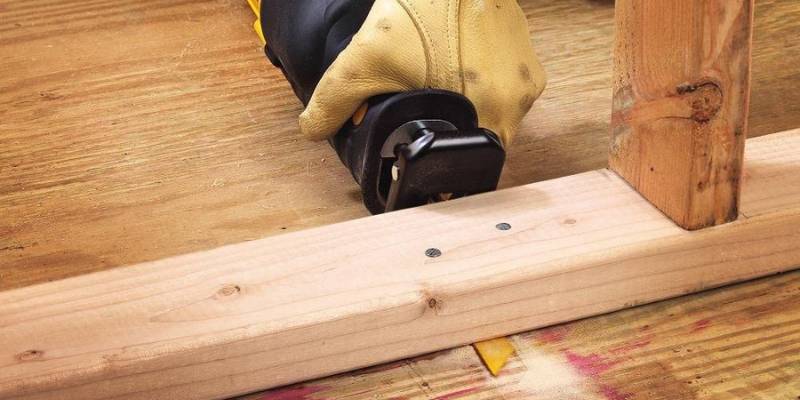
If you’re cutting through a piece of wood and there are nails embedded in it, you need no other saw than a reciprocating saw.
Using a circular saw will definitely damage the bade of the circular saw when it comes in contact with the nail and might even result in an injury to the person making the cut.
So, once you know that there are nails embedded in the wood you’re trying to cut and you don’t intend to remove the nails before making the cut, then a reciprocating saw is definitely the right tool for the job.
3. Easy to maneuver through cuts
The reciprocating saw is very easy to maneuver through cuts. When trying to cut shapes in wood, the best tool for the job is definitely a jig saw.
However, you can also do that with a reciprocating saw due to the tiny blade it uses. Though you shouldn’t expect the same accuracy as the jigsaw. Reciprocating saws are not precision tools, they are demolition tools.
4. Cut in tight spaces
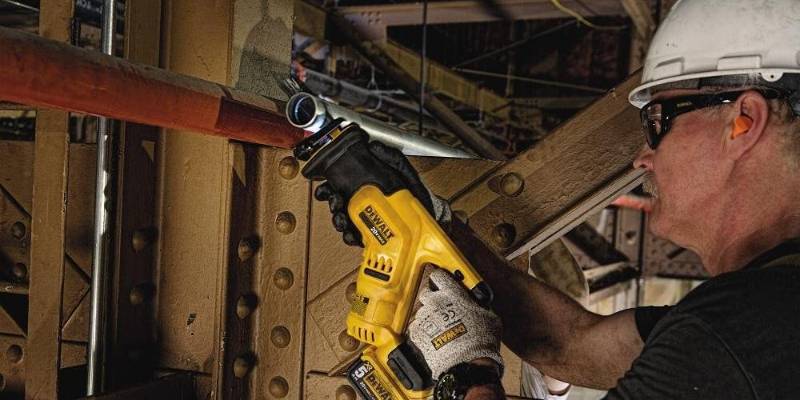
When other saws cannot make the cut because of the location where the cut needs to be made, a reciprocating saw comes to the rescue ones more.
Due to it’s streamline shape, the reciprocating saw can be used to make cuts in tight and uneasy spaces where it would be difficult or impossible to use other saws.
Hence, it’s important for you to have a reciprocating saw around especially in a busy job site where different issues and needs arises.
5. Making plunge cuts
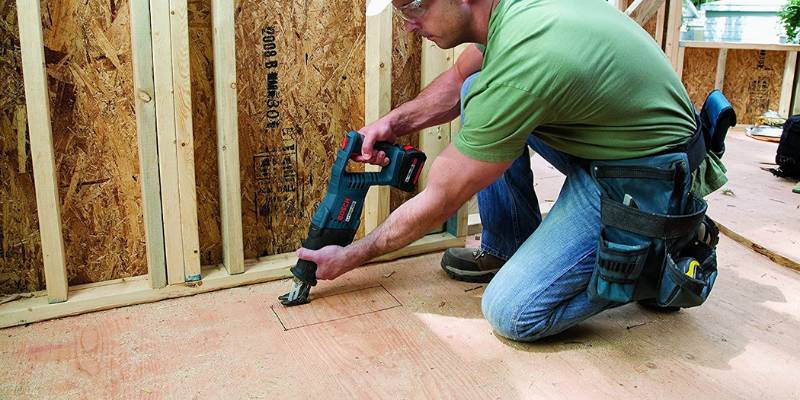
Reciprocating saws have pointed blades and can cut through different types of materials.
That makes it easy to use it for making plunge cuts, especially when you can’t make those cuts with other types of saws.
All you have to do is drill a hole through the material you want to cut with a power drill, from there you can insert the reciprocating saw blade and make the plunge cut.
6. Overhead cutting application

Making overhead cuts can be challenging depending on the type of saw you have in hand. Other saws may perform flawlessly when the cut can be made on the ground.
However, using them when the cut is above your head might either be difficult or even impossible. With a reciprocating saw though, you’ll find no difficulty making any type of overhead cut.
7. Farm and Garden Work
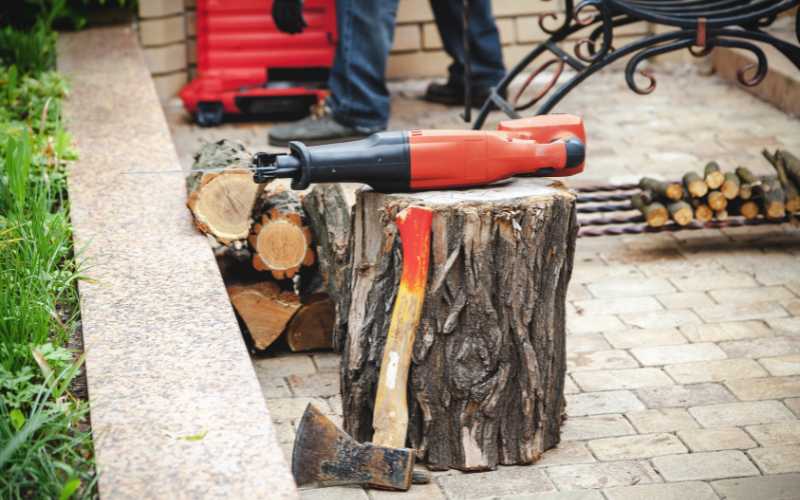
If you own a farm or garden, having a reciprocating saw around will save you some back breaking work and make your life much easier.
Like I said earlier, it can be used for pruning trees, even large tree branches. When digging up and uprooting a small tree, a reciprocating saw can also be used to cut through the root, since it can easily fit down there, unlike a chainsaw which might just be too big.
8. Plumbing Work

Plumbers cut through different types of pipes, from PVC to metal pipes. It’s possible to use a simple hacksaw for these cuts, but that will just waste time.
Using the right blade, a reciprocating saw can cut through both PVC and metal pipes with relative ease, and make your job as a plumber much more efficient.
How to choose the right blade when using a reciprocating saw
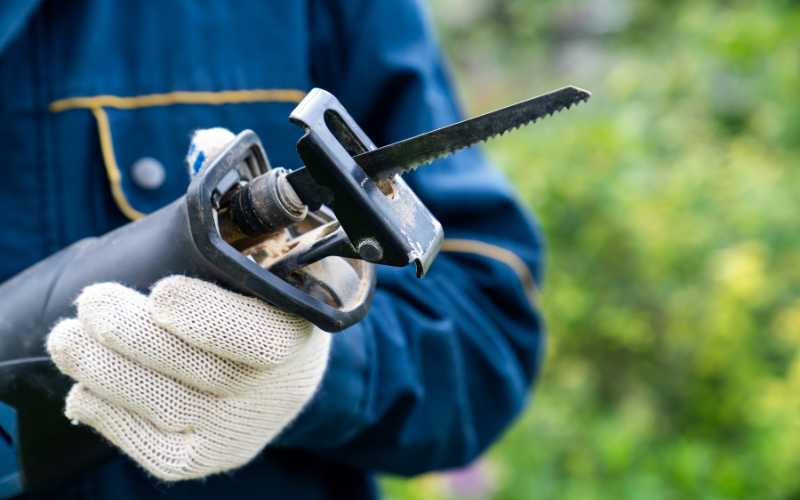
Like I mentioned earlier, you can cut almost anything with a reciprocating saw if you just equip it with the right blade. The question is, how do you choose the right blade when using the saw to cut different materials?
Well, reciprocating saw blades are measure in TPI, which stands for Teeths Per Inch. The TPI determines how smooth, fast or how rough the cut will be.
For harder or denser materials like plastic and metal, you should go for a higher TPI blade. This will make the blade cut slowly yet smoothly through the material.
On the other hard, when cutting through less dense materials like wood, you should go for a lower TPI blade so that it cuts through it at a faster rate.
How to use the reciprocating saw
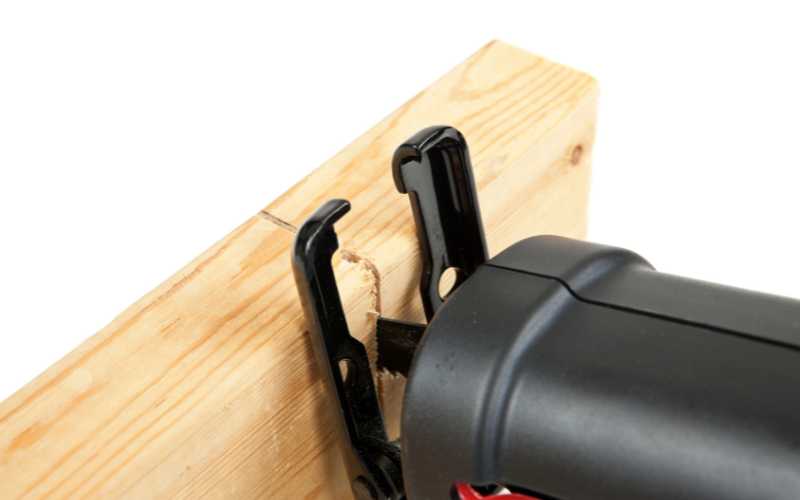
Before using your reciprocating saw, it’s important you wear the appropriate gear like safety glasses and hearing protection, and don’t wear loose clothing that can tangle with the saw blade.
Also make sure to remove the battery or unplug the saw cable from the power outlet before making any adjustments, like changing the blade.
You also need to make sure the material you’re cutting is clamped securely to a work surface to prevent it from moving during the cut.
Once you’ve made all your adjustment to the saw, you can now replace the battery or plug the saw cable into a power outlet.
Ensure to hold the saw with both your hands with one hand at the main handle, and the other at the front grip. Make sure to hold it firmly so as to have complete control over it.
To cut the material, rest the shoe against the material, press the trigger and allow the blade to come to full speed before getting in contact with the material. Make the cut and ensure the shoe remains flush against the workpiece throughout the cut. Once the blade cuts through, allow it to come to complete rest before lifting or dropping the saw.
When you’re done using the saw, ensure to remove the battery or unplug it from the wall outlet you or someone else don’t start it unexpectedly.

